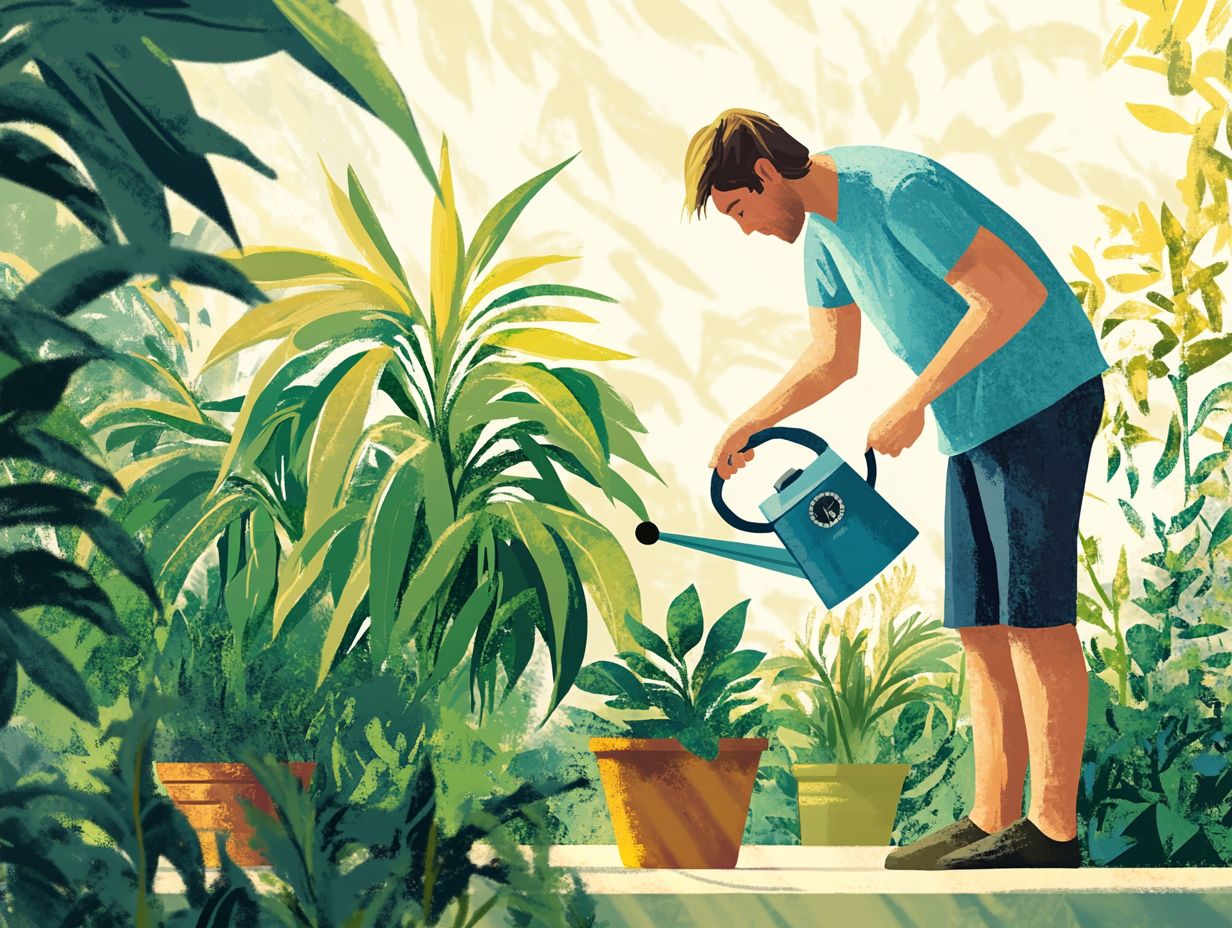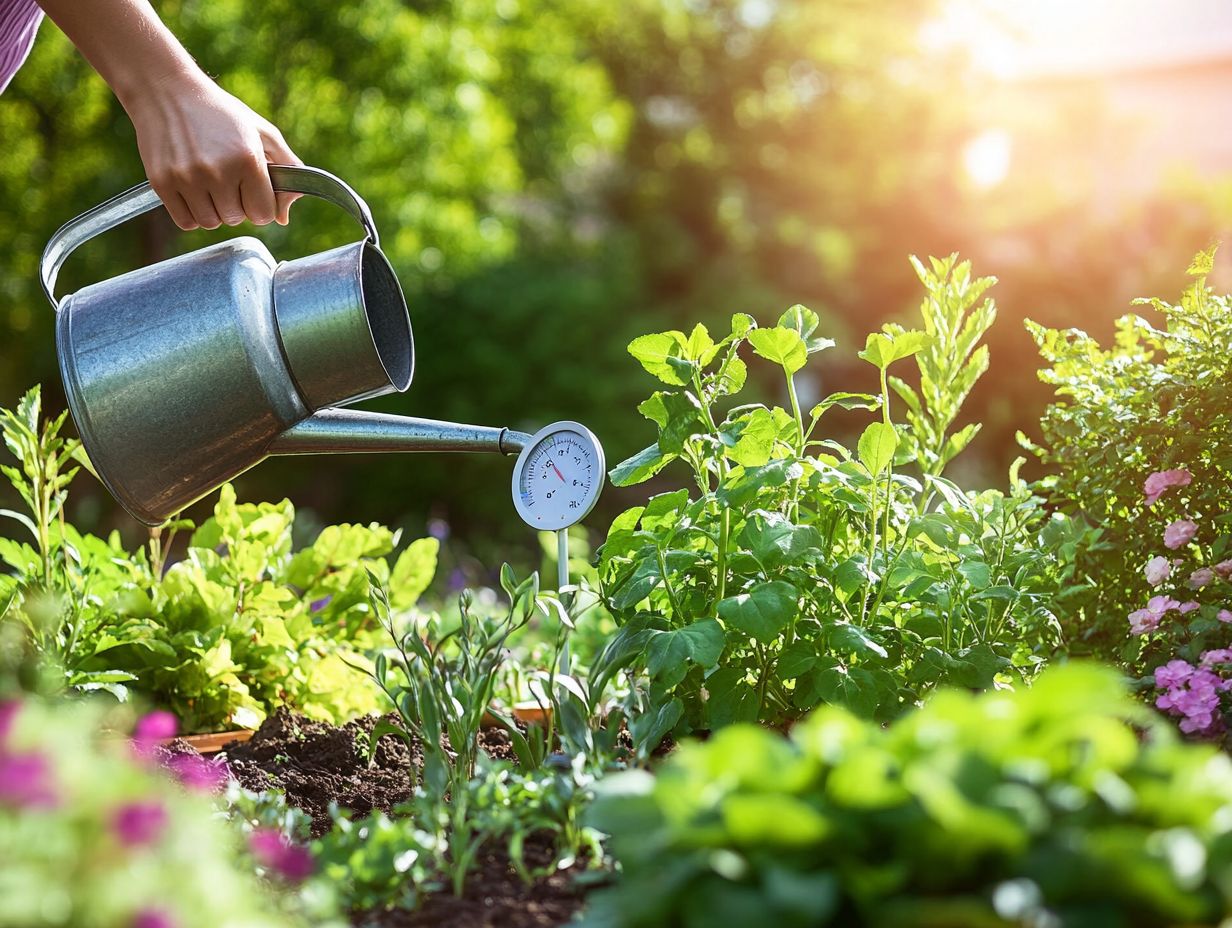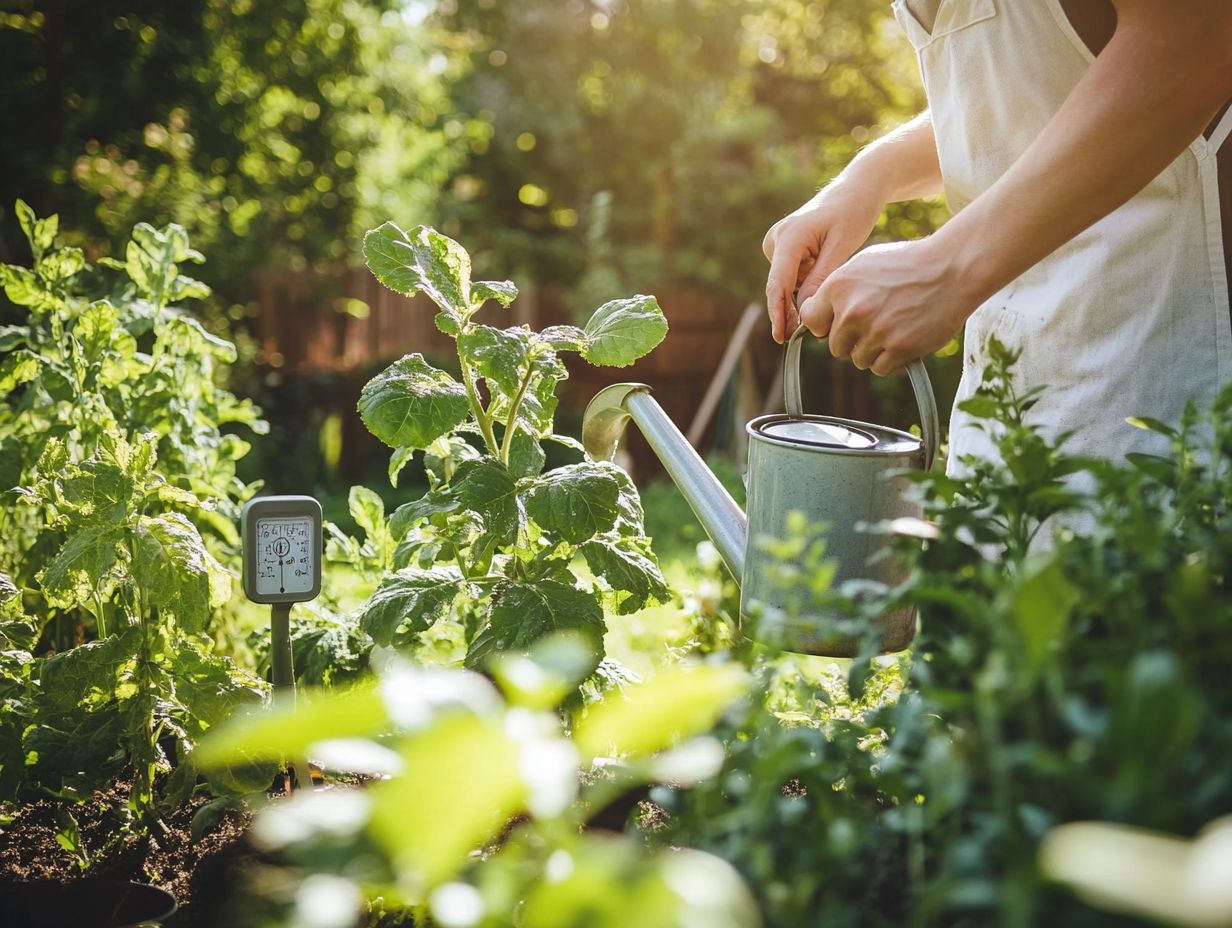Best Sustainable Destinations for Beach Lovers
Watering your plants can often feel like a guessing game, especially when they show signs of distress, such as issues with your sprinkler system.
Whether you re dealing with wilting leaves or stunted growth, pinpointing watering issues like low water pressure or high water pressure is essential for keeping your plants healthy.
This article will guide you through the common problems associated with watering, explore various causes from drainage issues to inadequate techniques and offer a detailed installation and troubleshooting guide.
You will also discover maintenance tips and tools to prevent future issues, ensuring your plants receive the care they deserve.
Dive in and transform your gardening success!
Contents
- Key Takeaways:
- Identifying Watering Issues
- Causes of Watering Issues
- Troubleshooting Watering Issues
- Preventing Future Watering Issues
- Best Practices for Watering Plants
- Tools and Techniques for Efficient Watering
- Frequently Asked Questions
- How do I troubleshoot low water pressure while watering in my landscape irrigation system?
- What can I do if my plants are not getting enough water?
- How do I fix uneven watering in my lawn?
- What should I do if my sprinkler system is not turning on?
- Why is my water bill higher than usual?
- How do I prevent over-watering my plants?
Key Takeaways:

- Identify signs of watering issues, such as wilting, yellowing leaves, and dry soil.
- Consider environmental factors and watering techniques when troubleshooting.
- A step-by-step guide can help diagnose and fix watering problems, while best practices and efficient tools can prevent future issues.
Identifying Watering Issues
Identifying watering issues in your watering system is crucial for maintaining your garden’s health and vibrancy. As a homeowner, you rely on your sprinkler system to deliver the right amount of moisture to your plants.
However, various factors can cause common challenges like uneven watering, low or high water pressure, and malfunctioning sprinkler heads. Understanding these potential pitfalls can save you time and money while ensuring a flourishing garden.
Common Signs of Watering Issues
You might notice signs of watering issues, such as dry patches, over-saturated areas, or visible damage like broken sprinkler heads. These symptoms often point to underlying problems just waiting to be uncovered through careful observation.
For example, dry patches could indicate insufficient water pressure or clogs in the sprinkler heads, preventing optimal coverage. Conversely, over-saturated areas might suggest excessive water flow, possibly caused by a malfunctioning valve or poorly calibrated irrigation zones.
By assessing water distribution patterns in your garden, you can identify discrepancies. Variations in water pressure can lead to uneven coverage, leaving some sections drowning while others remain parched.
Regularly inspecting and adjusting these components can significantly enhance your garden’s health.
Causes of Watering Issues
Understanding the causes of watering issues is vital for effectively managing your irrigation system. This includes both environmental factors and poor watering techniques that can disrupt smooth operation.
Weather fluctuations can impact your water supply, while mistakes in scheduling watering may lead to wasting water. Additionally, drainage problems or clogs can hinder your landscape maintenance, highlighting the need for thorough troubleshooting.
Remember, safety first: Always take precautions when working with irrigation systems, especially concerning electrical components and water pressure.
Environmental Factors

Is your garden thriving or struggling? The environmental factors surrounding your watering system can make all the difference!
Environmental factors significantly impact the effectiveness of your watering system. They influence everything from your water supply to the details of how you design your landscape and your garden care strategies.
Take climate, for instance; it plays a pivotal role in determining how quickly water evaporates and how well soil holds water. In arid regions, you ll need to irrigate more frequently. Conversely, in areas prone to heavy rainfall, inadequate drainage can lead to waterlogged roots.
The type of soil you re working with is also crucial. Sandy soils drain rapidly, while clay can retain too much moisture, stunting plant growth.
Seasonal changes complicate watering. They bring challenges like freeze-thaw cycles that can harm your landscape. It s vital to understand drainage areas, as proper grading and outlet placement can enhance water absorption. This ensures your garden flourishes even under varying environmental conditions.
Inadequate Watering Techniques
Inadequate watering techniques can create a myriad of troubleshooting issues within your irrigation system. This jeopardizes both its effectiveness and the health of your plants.
One of the most prevalent missteps is improper scheduling. Watering too frequently or not enough can induce unnecessary stress on your plants. Many struggle with how to set up their sprinkler controllers, which are often misprogrammed, leading to further complications.
Using electronic controllers lets you customize watering schedules tailored to the specific needs of your crops and local weather conditions. By correctly setting the timing and duration, these devices can optimize water usage. This ensures each plant receives exactly what it needs. It not only nurtures a flourishing garden but also significantly conserves valuable water resources.
Troubleshooting Watering Issues
Troubleshooting watering issues is a vital aspect of maintaining your irrigation system. It allows you to swiftly diagnose problems and apply effective repair solutions.
By adopting a systematic approach to examining your sprinkler system, you can easily identify common issues like faulty controllers, broken heads, or water leaks. Familiarizing yourself with components such as the valve box and valve solenoid will greatly enhance your troubleshooting capabilities. This leads to prompt repairs and improved water coverage.
Step-by-Step Guide to Diagnosing and Fixing Problems
A step-by-step guide helps you fix your irrigation system quickly. Follow these simple tips for effective sprinkler maintenance.
By following detailed steps, you can easily pinpoint problems like low or high water pressure, malfunctioning sprinkler heads, and faulty valves that could hinder your irrigation performance. Start by checking the water pressure with a gauge. If it s below 30 PSI or above 80 PSI, you likely have an issue.
Next, take a close look at each sprinkler head for any visible damage or clogging. Broken or misaligned heads can lead to poor water distribution. Don t overlook the importance of valve inspections leaking valves can waste water unnecessarily.
To keep your system running smoothly, maintain a maintenance checklist that includes regular inspections, cleaning of emitter filters, and testing the system after significant weather changes or repairs.
Preventing Future Watering Issues

Preventing future watering issues hinges on embracing best practices and employing the right tools and techniques to optimize your irrigation system effectively.
Conducting regular sprinkler audits and following diligent maintenance tips will help keep your landscape vibrant while reducing the risk of common watering problems.
By implementing proactive strategies, you can significantly enhance the water efficiency of your irrigation zones and ensure your garden thrives with optimal care.
Best Practices for Watering Plants
Implementing best practices for watering your plants is essential for maintaining the health and longevity of your landscape, especially when utilizing an irrigation system.
To achieve this, it’s crucial to establish an optimal watering schedule that considers the unique needs of different plant species and seasonal fluctuations in your region. A well-designed irrigation system conserves water and effectively targets specific areas of your garden, ensuring that moisture reaches the plants’ root zones.
Incorporating timers and soil moisture sensors devices that measure how wet the soil is can help you fine-tune your watering precision, reducing waste and promoting sustainable practices. These strategies work together to enhance your landscape maintenance, allowing your greenery to thrive while minimizing its environmental impact.
Tools and Techniques for Efficient Watering
Utilizing the right tools and techniques for efficient watering can significantly enhance your irrigation system’s performance and longevity.
For instance, incorporating pressure gauges ensures your system operates within optimal limits, preventing excess pressure that could cause damage. High-quality valve bodies are essential for controlling water flow, allowing you to precisely regulate hydration across different zones.
Electronic controllers automate schedules based on weather conditions and soil moisture levels. Get ready to transform your watering game with these amazing tools! By employing techniques like drip irrigation a method of delivering water directly to the roots of plants and sprinkler adjustments, you can maximize water coverage while minimizing waste, ultimately promoting a healthier landscape and conserving valuable resources.
Frequently Asked Questions
How do I troubleshoot low water pressure while watering in my landscape irrigation system?

To troubleshoot low water pressure, first check for kinks in your garden hose. If the hose is clear, check your faucet and make sure the valve is fully open. If the pressure is still low, examine the sprinkler heads for clogs or damage. Also, check the pressure gauge to ensure your water supply is adequate, and inspect your main water line for leaks or issues.
What can I do if my plants are not getting enough water?
If your plants are wilting and not getting enough water, first evaluate your watering schedule. You may need to increase the frequency or duration of watering. Try watering directly at the base of the plant instead of using sprinklers. Also, ensure your soil drains properly and isn’t compacted, which can cause drainage problems.
How do I fix uneven watering in my lawn?
If you notice brown patches or areas of your lawn not getting enough water, it may be due to uneven watering. Ensure your sprinkler heads are properly adjusted to cover the entire lawn. Conducting sprinkler audits can help identify any underlying issues, such as poor soil drainage or blocked sprinkler heads.
What should I do if my sprinkler system is not turning on?
If your sprinkler system is not turning on, first check the power source. Ensure it is plugged in and there are no tripped circuit breakers. If the power source is fine, verify that the sprinkler controller is programmed correctly. You may also need to check the valve solenoids to ensure they are functioning properly to avoid maintenance issues.
Why is my water bill higher than usual?
If you notice a sudden increase in your water bill, it could be due to a watering issue. Check for leaks in your sprinkler system or faucet and ensure your watering schedule isn’t excessive. Consider installing a smart irrigation system that adjusts watering based on weather conditions to save on water usage.
How do I prevent over-watering my plants?
Over-watering can be just as harmful as under-watering for plants. To prevent this, follow a watering schedule and avoid watering too frequently. Use a moisture meter to determine when your plants actually need water. Additionally, ensure your soil has proper drainage and isn’t constantly saturated by addressing any drainage issues.






